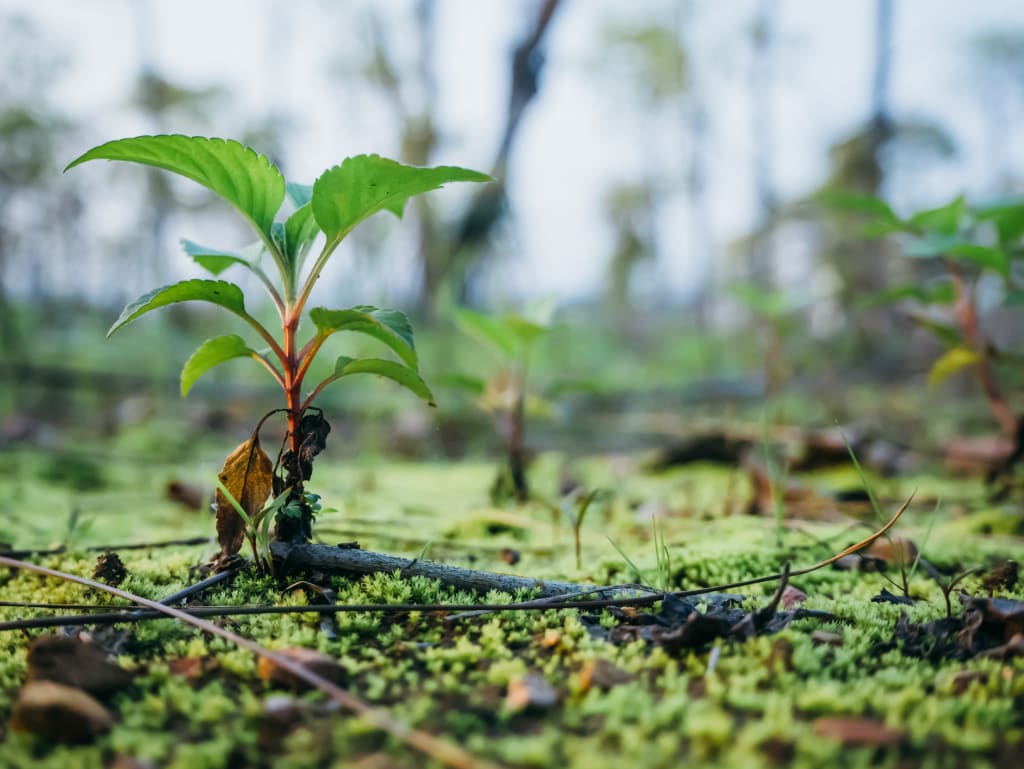Planting an Apple Tree in your Backyard? Here Are All the Really and Truly Important Things to Know Before You Do
If you are looking for a delicious, healthy snack that you can grow in your own backyard then consider planting an apple tree!

Apple trees are a great investment to get the freshest fruit! The trees provide shade in summer and fall, create privacy in your yard, and can even help to control erosion. But if you're new to planting apple trees or have never grown them before, you probably have some questions about how best to plant them in your own backyard. We're here to help! Read on for all the information that'll make sure your tree thrives from its first roots through its full life cycle.
A successful apple crop is a generational success
An apple tree is a long-term commitment. Apple trees can live for more than one hundred years, and a crop of apples takes about four years from the time you plant the seeds to harvest. If you think this sounds like a lot of patience and hard work, you're right! But if you're willing to put in that effort, it can be worth it: an apple tree can produce crops for multiple generations to enjoy.
The fruit from your very own apple tree will be so much tastier than anything store-bought, too - you'll get your own supply of fresh local fruit without having to drive anywhere or pay any delivery fees. Plus it's nice knowing exactly where your food came from and how it was grown; nobody wants mystery additives or pesticides when they're eating something as wholesome as an apple!
An apple tree produces only one kind of apple
One of the first things to know about apple trees is that they're self-fertile. This means that an apple tree will produce fruit if it has both a male and female flower on it. Many people mistakenly believe that all apples need more than one tree to pollinate them, but this isn't true for most varieties at all! In fact, most apples are monoecious - meaning that each apple produces both male and female flowers (in other words: it's bisexual). It's also important to note that because of their sexual nature, apple trees are wind-pollinated; they make no use of bees or other insects in order to fertilize themselves. Apple trees do not naturally produce seeds like pears do - instead, they grow new sprouts from their roots called 'suckers'.
Pollination is essential for a good crop of apples
If you're planting an apple tree, it's important to know about pollination. Pollination is the process by which pollen from flowers is transferred to another plant of the same species. Without pollination, there are no fruit or seeds and therefore no new plants and trees can grow.
There are a few different ways to add pollen to your apple tree in order for it to produce fruit: hand-pollinate with a paintbrush; use beeswax or honeybees; shake the branches; or use wind-pollination if you live in an area where there are many other apple trees nearby (but don't do this if you want any kind of quality).
You need the right apple tree in the right place
Before you even think about planting an apple tree in your backyard, you need to make sure that the location is right.
Apple trees need full sun and good drainage. So if you have a spot that gets shade during the day, or if it's always wet (like near a creek), it's not a good place for an apple tree. Be aware that many people will tell you different things about how much water an apple tree needs - the truth is that they all need plenty of water when they are young and growing out new branches, but once mature it doesn't take much at all to keep them healthy and happy. The general rule of thumb is 1–2 inches per week in the summertime - but again this can vary depending on variety as well as location within your yard (north vs south). A good way to tell if your tree might be getting too much water is by looking at its leaves: If they are pale green or yellowish instead of dark green then it probably hasn't been getting enough!
Once planted however there will be little else required other than pruning each winter season after fruiting has ceased - but more on THAT later…
Most apple trees prefer full sun, but some will tolerate filtered or dappled light.
Apple trees prefer full sun and are best planted where they will get plenty of it. Most apple varieties will also tolerate some shade, but avoid planting in areas that receive no more than three hours of direct sunlight per day. If you live in a climate with harsh winters, consider choosing one of the hardier varieties such as Northern Spy or Winesap.
Most standard size apple trees reach 20–25 feet at maturity so you'll want to consider this when choosing a location.
When you're planting an apple tree, you need to consider the size of your yard. You will need to have a large enough tree to grow the apples and ensure that they are not too big for your yard. If you have a really large yard, don't worry about having too small of an apple tree. But if you live in an apartment and only have room for a table-sized apple tree, choose one that isn't overly large and heavy.
Apple trees require regular pruning to prevent overgrowth and encourage vigorous fruiting.
The most important task you must perform when caring for your apple tree is pruning, which should take place in late winter or early spring. Pruning will help you:
- Remove damaged branches and deadwood
- Shape the tree as it grows
- Thin out the canopy of branches to let more light through so fruit can form better, smaller fruits
- Increase air circulation around all parts of the plant, preventing disease from spreading through leaves and fruit
You'll also need to prune periodically to reduce the risk of fire in your yard.
One of the best times to prune an apple tree is in late winter when the tree is still dormant, though you can also do some corrective pruning during summer.
One of the best times to prune an apple tree is in late winter when the tree is still dormant, though you can also do some corrective pruning during summer. This may sound counter-intuitive, but it actually makes a lot of sense. Late winter is a good time to prune because:
- The tree won't be growing any new shoots yet, so it has nothing potentially at risk if you accidentally remove something important like a branch or bud.
- You allow time for any cuts made during this period to heal over before growth resumes in spring (or early summer).
- It allows you to see where your cuts are going as they are made by opening up leaves and buds that would otherwise be covered by foliage when warmer temperatures arrive again. In addition, there will likely be less sap flowing through the plant at this time which makes your job easier! However - if possible try not make these incisions too deep since they could become infected by bacteria or fungus once they heal up later on down road (and this could lead back into needing antibiotics again).
Apple trees are a great investment to get the freshest fruit!
One of the best things about planting an apple tree is that it will be there for years to come. You won't have to worry about losing your investment because they'll continue to bear fruit every year. That means you can always count on getting fresh, delicious apples right off of your own tree!
If you have children or grandchildren who are getting interested in gardening, apple trees are a great way to get them involved with gardening and keep them interested over time.
Conclusion
If you are looking for a delicious, healthy snack that you can grow in your own backyard then consider planting an apple tree!
About the Creator
Courtanae Heslop
Courtanae Heslop is a multi-genre writer and business owner.
Enjoyed the story? Support the Creator.
Subscribe for free to receive all their stories in your feed. You could also pledge your support or give them a one-off tip, letting them know you appreciate their work.






Comments
There are no comments for this story
Be the first to respond and start the conversation.